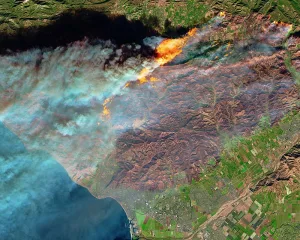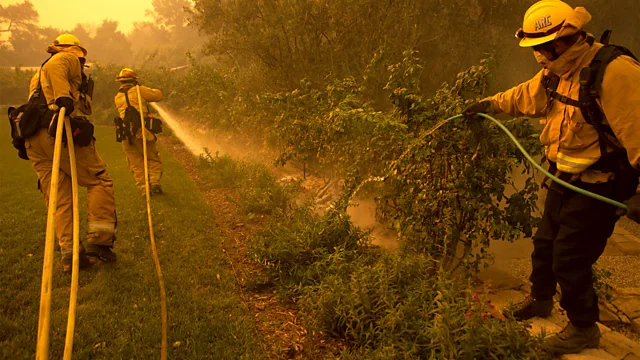In December 2017, the Thomas Fire ignited in Ventura and Santa Barbara Counties, becoming one of the most destructive wildfires in California’s history. It burned over 281,893 acres (440 square miles) before being fully contained in January 2018. The fire destroyed over 1,000 structures and caused damages totaling $2.2 billion. At the time, it was the largest wildfire California had ever seen. It now ranks among the top ten most destructive wildfires in the state.

Strong Santa Ana winds fueled the fire’s rapid spread. Firefighters worked around the clock, with 8,500 personnel mobilized—the largest deployment in California wildfire history. The fire moved so quickly that at its peak, it advanced an acre per second. In some areas, the blaze even created its weather, transforming into a full-blown firestorm.
Despite the efforts of thousands of firefighters, the firestorm tore through communities, including Ventura and rural areas in the Santa Ynez Mountains. In the days that followed, 104,607 people had to evacuate their homes. As the fire continued, the area remained extremely dry, as the region experienced its driest period on record from March to December.
When rain finally arrived in January, the burnt landscape became vulnerable to flash floods and mudslides. These slides, triggered by the heavy rains, devastated Montecito. The debris flows killed 21 people and destroyed more than 100 homes.
The Thomas Fire left behind a trail of destruction and forever changed the landscape of Southern California. Beyond the loss of homes, the region’s agricultural sector suffered $171 million in damages. The fire’s immense power and tragic aftermath serve as a lasting reminder of the devastating force of nature.




